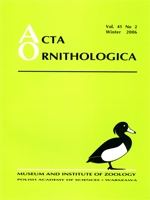Like many other seasonally breeding birds, Blue Tits raise their chicks mainly at the time when numerous caterpillars attack fresh oak leaves. This paper reports on the results of the first quantitative study of food ecology in combination with the breeding biology of a North African population of Blue Tits occupying distinct patches of oak habitat (high-altitude semi-evergreen zeen oak versus low-altitude evergreen cork oak). To check for between-habitat differences in intensities of nest parasites feeding on chicks, all nests monitored were heat-treated during the chickraising stage. The peak demands of the chicks were found to coincide with the peak date of caterpillar availability in both habitat types. Food availability was much higher in the semi-evergreen habitat, and the diversity of prey delivered to the chicks was higher in the evergreen habitat. Surprisingly, breeding success was very low in both habitat types. It is suggested that several environmental constraints may cause maladapted avian breeding responses in heterogeneous Algerian habitat mosaics. Spatial variation in micro-climate may influence the capacity to adaptively adjust breeding responses to distinct habitat types.
How to translate text using browser tools
1 December 2006
Breeding Performance of Blue Tits Cyanistes caeruleus ultramarinus in Relation to Habitat Richness of Oak Forest Patches in North-Eastern Algeria
Nadia Ziane,
Yassine Chabi,
Marcel M. Lambrechts

Acta Ornithologica
Vol. 41 • No. 2
December 2006
Vol. 41 • No. 2
December 2006
Blue Tit
Cyanistes caeruleus ultramarinus
habitat richness
NORTH AFRICA
oak
Parus
Quercus




